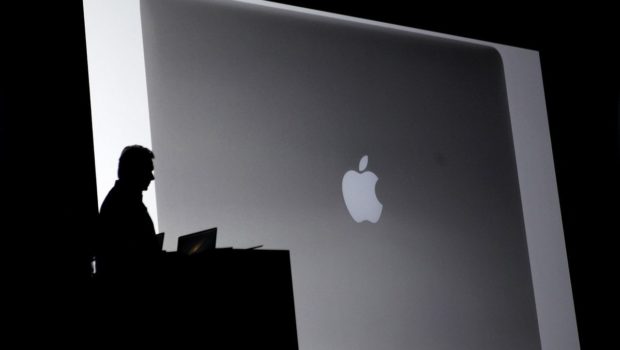New Apple Leak Promises Stunning MacBook Pro
June 11 update below, post originally published June 9.
The anticipation continues to build ahead of Apple’s upcoming virtual WWDC. Updates are expected to all the operating systems in Apple’s portfolio, but it’s the changes to MacOS to allow ARM-based processors to be used in hardware currently locked in with Intel that will have the biggest impact on Tim Cook’s Apple.
SAN FRANCISCO, CA - JUNE 11: Apple Senior Vice President of Worldwide product marketing Phil ... [+]
Getty Images
June 10 update: It’s important to stress that the announcement from the stage is going to be software focused. While WWDC has been used for hardware launches in the past, recent years have seen potential hardware announcements happen by press release in the weeks before the event.
That’s not going to happen this year… bringing ARM support to MacOS is too big a move to make the jump to software and hardware at the same time. Daring Fireball’s Jon Gruber:
“I know there are some folks who think Apple might simultaneously announce the transition while unveiling ARM-based Macs for immediate availability, but that just doesn’t make much sense… developers need time to get Mac apps ready. Some developers — the smart ones — are effectively ready to go, and will be able to recompile their apps for ARM as soon as Apple makes a new version of Xcode available. But others will need time.”
Given the virtual nature of the event, the need to prepare developers for ARM, and the recent updates to the MacBook Air and MacBook Pro, the chances of new Mac hardware at WWDC are very slim.
June 11 update: Although an ARM powered MacBook is not expected to launch at WWDC, there could be a refresh to the iMac line-up (which would naturally stay on the Intel Core processor platform). The details come from Apple tipster Sonny Dickson as he drops the expected iMac specs on Twitter:
"New iMac incoming at WWDC. iPad Pro design language, with Pro Display like bezels. T2 chip, AMD Navi GPU, and no more fusion drive”
Given consumers will expect a desktop computer to last a number of years - especially an iMac, given Apple’s reputation - this should be taken as a clear sign that Tim Cook and his team will not be looking to sideline Intel in the near future. The shared MacOS platform between ARM and Intel will be with us for many years.
The first consumer Mac powered by an ARM chip - which is likely to be one of Apple’s Axx range, along the lines of the A12Z in the current iPad Pro - is expected to be a MacBook. Before the hardware release, the community is going to need to get to grips with the new OS code. Hence the likely announcement at WWDC later this month. Bloomberg’s Mark Gurman:
"Apple Inc. is preparing to announce a shift to its own main processors in Mac computers, replacing chips from Intel Corp., as early as this month at its annual developer conference, according to people familiar with the plans.
"The company is holding WWDC the week of June 22. Unveiling the initiative, codenamed Kalamata, at the event would give outside developers time to adjust before new Macs roll out in 2021, the people said. Since the hardware transition is still months away, the timing of the announcement could change, they added, while asking not to be identified discussing private plans.”
Moving MacOS to ARM does not answer questions around the lack promotion of the Mac line up or the priority given to new features for iPadOS and iOS. But there are three key areas where a move to ARM will help Apple.
Firstly, it brings more of the Mac ecosystem under Apple’s control. Intel is not just a single supplier, but a single supplier of a mission critical component. Intel has the dominating hand in this relationship. Of course the market share that Apple offers is significant, but if Intel changes the deal Apple may have little choice to accept it. That would not be the case if Apple was designing the ARM processor and looking for bids to manufacture the silicon.
Secondly, it will help Apple in head-to-head comparisons with similar laptop and desktop systems powered by Windows 10. The recent launch of the 13-inch MacBook Pro showed a machine that was the equal of the competition… something that will always be the case when you are using the same chipset as other manufacturers.
One of the advantages with iOS and iPadOS is the tight integration between Apple’s software and hardware teams - they can work together to find more efficient ways for all of the elements to work together, from the early planning stages, through manufacturing, and during unit optimisation. Generic silicon paired up with an operating system that has to work on countless hardware combinations rarely achieves the synergy that Apple can find with ARM powered Macs.
Finally, and perhaps most importantly, it offers Apple the ability to control the timing.
The Mac platform is tied to Intel’s development cycle. It’s not the comforting annual tick-tock you have with the iPhone. Bringing an iPhone-esque structure to the Mac release schedule (say three years on the dot for Mac Pro, two years for the MacBook Pro and desktop Macs, and every year for the MacBook Air) brings the desk-bound hardware a regularity that allows for more efficient planning by Apple and its customers.
Time to roll out the code.
Now read more about Apple’s sneaky price rise on the new MacBook Pro…








Gloss